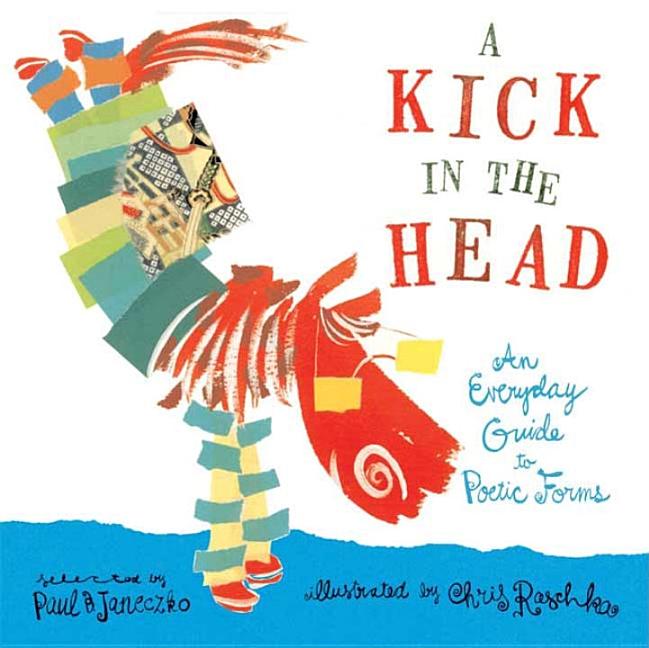Book Description
for A Kick in the Head by Paul B. Janeczko and Chris Raschka
From Cooperative Children's Book Center (CCBC)
“Robert Frost once remarked that poetry without rules would be like tennis without a net,” writes Paul B. Janeczko in the introduction to an informative and irresistible volume that briefly explains and clearly illustrates 29 different poetic forms. There is the simplicity of the couplet (“a two-line poem or stanza, usually rhyming”) and the complexity of the pantoum (“an interlocking series of quatrains, with lines 2 and 4 of each stanza repeated as lines 1 and 3 of the next stanza. The final stanza adds a finishing touch—as lines 2 and 4 repeat lines 1 and 3 of the opening stanza. Whew!”). He pairs each short explanation of a form with one or two accessible poems from a wide range of poets. From the ode (Gary Soto’s “Ode to Pablo’s Tennis Shoes”) to sonnets (Shakespeare, and April Halprin Wayland on Shakespeare), limericks (Edward Lear and Steven Herrick) to a list poem (Georgia Heard), Janeczko’s selections cover a wide range of poetic terrain and human emotion. Most of the examples follow the rules for each form, but a few playfully alter them. An invaluable resource for classrooms, the 29 types of poetry offer inspiration for readers and writers of any age and temperament. Longer notes on each form are provided at the end of the volume, while Chris Raschka’s breezy watercolor, ink, and torn-paper illustrations provide visual accompaniment to the poem(s) on each page spread. (Age 9 and older)
CCBC Choices 2006 . © Cooperative Children's Book Center, Univ. of Wisconsin - Madison, 2006. Used with permission.


